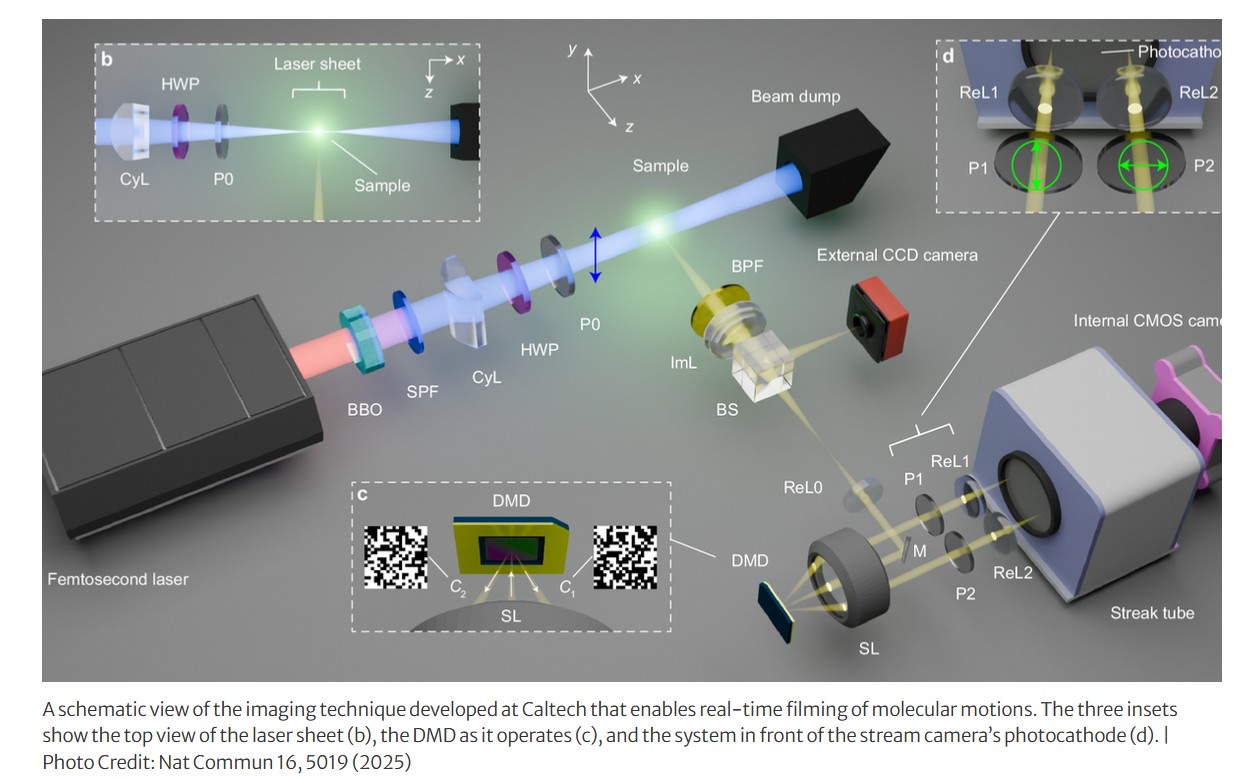Why in the News?
Over a century after Einstein explained Brownian motion, California Institute of Technology (Caltech) scientists have created a powerful microscope that shows molecules moving in real time at an extremely tiny scale.

What is Brownian Motion?
|
About Caltech Microscope:
- Resolution: Angstrom-level (1 Å = 0.0000000001 m).
- Speed: Captures hundreds of billions of frames per second.
- Advantage: Wide-field, single-shot imaging with no sample damage.
- How It Works?
-
- Setup: Fluorescent molecules in water illuminated by ultrafast lasers.
- Light Capture: Scattered light directed via Digital Micromirror Device.
- Streak Imaging: Light converted to electron patterns revealing molecular size.
- Reading Size: Faster changes = smaller molecules; slower = larger.
| [UPSC 2000] Which one of the following can be used to confirm whether drinking water contains a gamma emitting isotope or not?
Options: (a) Microscope (b) Lead plate (c) Scintillation counter* (d) Spectrophotometer |
Get an IAS/IPS ranker as your 1: 1 personal mentor for UPSC 2024

